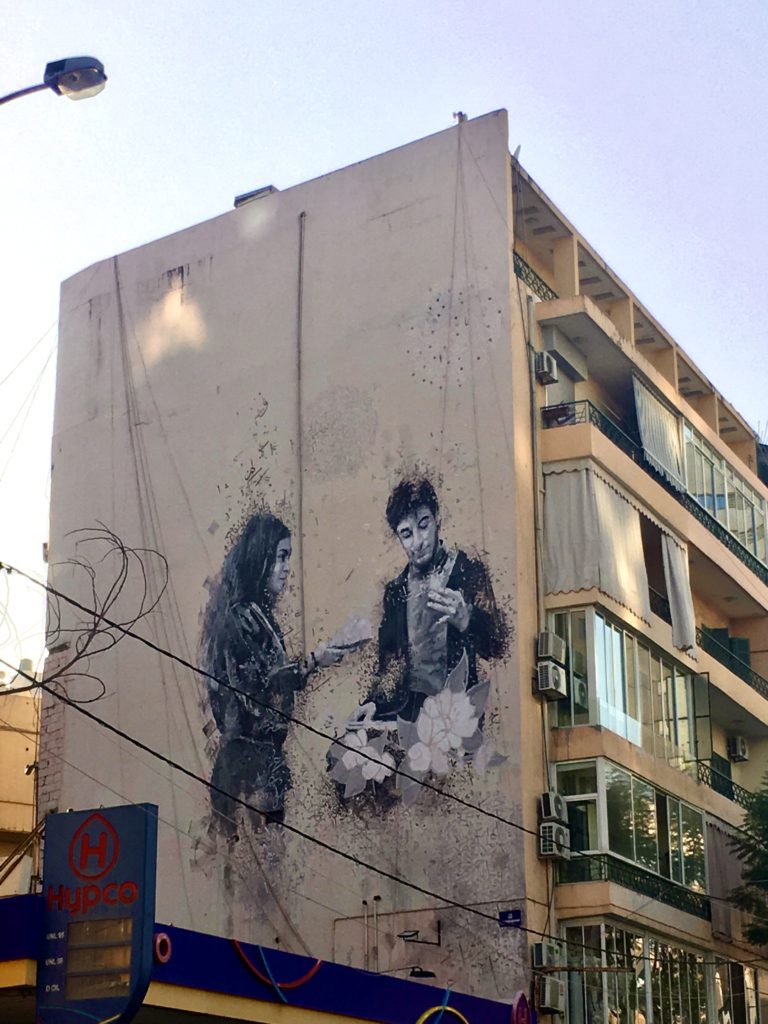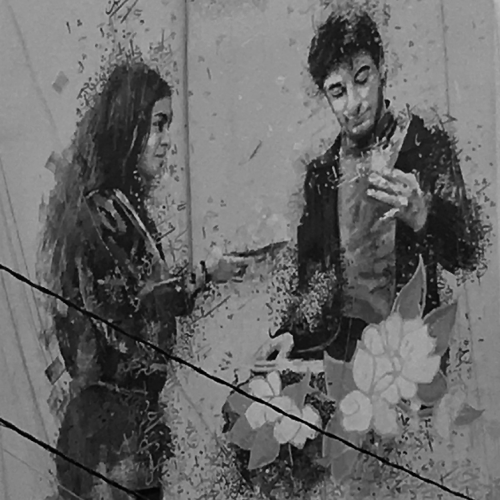“West Beirut” turns 23 – why is it still so relevant?

(photo credit Nathan Emanuele Silber)
By Nathan Emanuele Silber.
As Lebanon is in the middle of its biggest post-war crisis, ghosts of the past are very much alive. However, while the sectarian system is still in place, something amongst the population has changed. New feelings, dynamics, and hopes are being driven by the Lebanese youth. As the movie “West Beirut” turns twenty-three, its message is still alive and plays an important role in the demands for change by an increasing share of the Lebanese people.
Before the world was turned upside-down and put on hold in 2020, Lebanon had made it to the headlines of dozens of international news outlets. After widely-contested new taxes had been announced by the government, images of Martyrs’ Square packed with protesters and Lebanese flags were to be found on any newspaper and in every news channel. While these tax increases might have been the proverbial drop that breaks the camel’s back, the anger and frustration of the protesters were fueled by decades of the dysfunctionality of the political system. Corruption, fear of a financial meltdown, misgovernance, and the ineptitude of the ruling class were the targets of the singed slogans, which ultimately called for the resignation of the entire political class: “all of them means all of them”. While Lebanon is certainly not new to extensive protests, the October 2019 Revolution has a number of characteristics that render it unique and oriented to the future. As we will see, the non-sectarian (and even anti-sectarian) nature of the protests is rooted in a change that has been decades in the making, and that reflects the central message of 1998’s West Beirut.
A very simple exercise can give a glimpse into the importance of this movie. While the words “West Beirut” obviously remind of the capital’s division during the conflict, when searched on Google they send the user directly to links, articles, and pages about “West Beirut” the movie. Written and directed by Ziad Doueiri, this vibrant, bitter-sweet drama narrates the life of three kids living during the war: Tarek, the charismatic and entertaining son of a lawyer and an intellectual, who grows up in a secular Muslim family; Omar, his energetic and Super 8 aficionado classmate and best friend, and May, a young Christian orphan who moves in to be Tarek’s neighbor. While waiting in the corridors of the Lycée Français for his teacher to readmit him to class, Tarek witnesses from the window the infamous Bus Massacre, in which Phalangists kill thirty Palestinians. Beirut becomes split, and for the joy of Tarek and Omar, all classes are canceled. As May enters the scene and the war escalates, Tarek and Omar manage to secretly film the attractive new wife of Omar’s uncle and decide to develop the Super 8 tape. Along with May, who Omar dubs “Virgin Mary”, they cross the city to get the film; however, militiamen refuse to let them leave West Beirut, and the kids slowly begin to face the reality of war. After Tarek accidentally lands in a brothel in East Beirut, he meets the legendary Oum Walid. As the lightheartedness leaves the kids, Tarek thinks he can have a solution for the conflict; on a second visit to Oum Walid’s house, however, the harsh reality hits him, and he realizes that he is being naïve.
A personal interpretation of the movie suggests two central messages, captured by two scenes. The first one, taking place in Tarek’s family car, shows him very sarcastically lamenting not being able to go to school, and later joking about it with Omar through their windows. This theme, which will be present until shortly before the end of the movie, shows how the three kids are psychologically distant from the war, the politics, the sectarian social dynamics: they want to be friends, have their adventures, and roam around the city. The seeds of sectarianism, division, and later hatred have not reached their souls, and even despite Omar’s mockeries, they relate to each other based on their common passions, curiosity, and humanity. There is, obviously, the risk (which often becomes reality) of slowly turning towards division and estrangement, which are some of the factors that led to the war; here is where the second key scene becomes fundamental. While for the entire movie the kids had been putting their differences aside, one of the end scenes shows Omar not only accepting but embracing his differences with May. Previously, as he mocked her, May had given him her little golden cross, which he put in his pocket. As they share a sweet — melancholic Tarek in the background –, Omar shows her that he had hung her cross on the same necklace on which he wears a pendant of the Holy Quran. As said, while during the movie they accepted each other despite their differences, they are now close to each other with their differences.
The fact that Doueiri chooses three youngsters to play the main roles is not a coincidence. The young age is crucial for the later development of every citizen: it’s the age at which we question authority, we see tradition as antiquate, we believe in utopic ideas. While this can often lead to misleading, objectively naïve, and even dangerous ideas, it is also fundamental to point at what might actually be wrong with society, as we will see later. Without having to over-stimulate our imagination, we can understand how kids naturally tend to play, talk and learn with each other, not caring about their different backgrounds; this element of openness is fundamental to the youth in order to learn their way through the world. The need to explore, know, ask, question, etc. can slowly fade away as we age; at some point, the reality is that we cannot choose to ignore differences or hard truths. That moment, which is represented by Omar’s choice, is where many Lebanese youngsters have found themselves. As it seems, between rejecting diversity and accepting it, more and more young people are choosing the latter.
As of 2014, the share of fifteen to twenty years old represented 20% of the entire population, with a higher-than-average unemployment rate. These important figures are crucial when we look at the protests of 2019: while previous waves of protests (the anti-Syrian occupation protests, the “You stink” protests, etc.) had a specific objective, the Thawra has a clear anti-systemic connotation, as we have shown in the introduction. Because of such nature, and because of what we previously said about young people’s attitudes, the fact that it is (at least initially) largely youth-driven makes very much sense. As said, the energetic, driven youth can often be misled; in 2019, however, the protests filled a gap that Lebanese society seemed to have been looking for years, as more and more citizens from all generations joined. In a system as flawed as the Lebanese one, and so deeply tied to religious, social, and cultural dynamics, it takes the most rebellious, thoughtful, and open ones to point the finger at what is wrong.
As many civil interreligious dialogue initiatives have been taking place over the last years, many Lebanese, driven by the newer generations, are willingly embracing a Lebanese identity. This, which has been years in the making, has clearly shown itself during the October Revolution. The calls for the end of the sectarian system, to be replaced by a Lebanese system, have been repeated by members of all communities. That shows not only unity of interest, but also a unity of identity: at this point of history, and looking back, it is not too inappropriate to call it a new Lebanese identity. Clearly, while we are talking about a large and influential amount of people, there are many forces that are (intentionally or not) working against this process: from the ruling political class to those who have difficulty, sometimes understandably, to abandon wartime mentality, to those who simply are satisfied by the status quo. There are many important questions to be asked: is this change too sudden, and will it cause a backlash? Maybe. Are the requests for change coupled with an individual effort to become better individuals? Quite often. Is the Thawra pointing its finger in the right direction? Most likely. Will it succeed? Hopefully. While it is difficult to give definitive answers, it is certainly a new, unique and full-of-hope development of Lebanese civil society.
To sum up, the October Revolution has shown a new face of a part of the Lebanese people: one that embraces commonalities, accepts differences, and tries to build a real, concrete common identity. The movie West Beirut, while shot more than two decades ago, is a perfect metaphor for growing up in the Lebanese context: while the will to change the world is, in most cases, torn apart by the harsh reality of things, small individual, personal steps like accepting differences and choose to share candy, a city or land with those different from you can ultimately change hundreds of thousands of minds. Twenty-three years ago, Omar put a cross next to his Quran; now, a new generation of Lebanese citizens is redefining the country.
Nathan Emanuele Silber was born in the Italian part of Switzerland, where he lived until he obtained his high school diploma. Always interested in matters of dialogue, politics, and migration, he completed his high school thesis on the Muslim presence in Switzerland starting from the 1960s. After working in London for a homeless housing charity, he moved to Barcelona, where he started a Bachelor’s degree in International Relations. He currently finds himself in Beirut for an exchange semester. His choice was motivated by his desire to improve my Arabic language skills, learn more about Lebanon and the Middle East and live a real-life example of the opportunities and challenges provided by the wide diversity of faith, culture, and socio-economical background.

